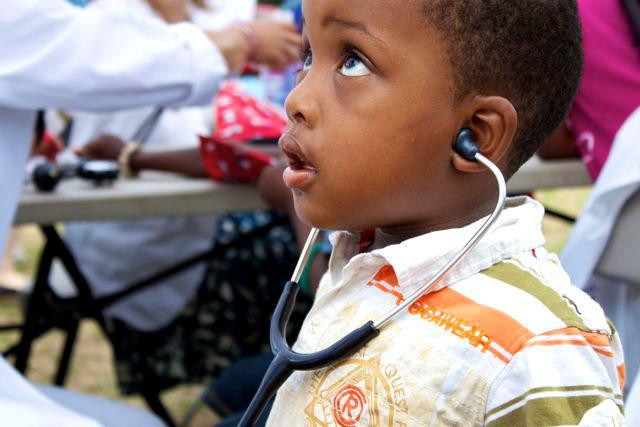
In Baltimore, Maryland, residents of Greenmount East have a life expectancy nearly 20 years shorter than the residents of Roland Park, just 3 miles away. Greenmount East and other inner-city neighborhoods in Baltimore have residents who experience higher rates of diabetes, heart disease and HIV than people who live in more affluent areas of the city, such as Roland Park. These inner city communities are also struggling with high unemployment, poverty, drug abuse, violence, and a host of other social problems that lead to poor health. And with fewer primary care doctors, people living here also don’t have access to much needed health care.
To better serve its local community, Johns Hopkins School of Medicine launched a program in 2010 to teach primary care doctors how to work in urban settings. The project is supported by a four-year $703,384 grant from the Josiah Macy Jr. Foundation.
Training Residents in Urban Health Issues
The Johns Hopkins Med-Peds Urban Health Residency Program combines general internal medicine and pediatrics in a four-year program, preparing doctors to care for patients from birth to death.
First year interns learn how education, housing, and other economic and social issues influence the health of their patients. “These lectures and their clinic experience begin to connect our residents to the community where they are practicing,” says Leonard Feldman, M.D., program director. “We introduce them to Baltimore’s network of social services and the varied opportunities to help patients beyond medical care.”
In subsequent years, residents participate in two urban health rotations a year, tackling problems prevalent in urban environments such as psychiatric illness, HIV and substance abuse. They also have the chance to deliver care in prisons, work with the police department to address domestic and sexual violence, and partner with the Baltimore City Health Department (BCHD) to develop policies and programs to improve health in the city, such as establishing STD clinics and needle exchanges. “Their work with the BCHD allows the residents to collaborate with community partners to get to know a specific neighborhood and to learn how to tackle that neighborhood’s problems,” explains Feldman.
Gaining Experience in a Community-Based Clinic
In addition to hospital-based teaching, residents practice in a local community health center, East Baltimore Medical Center. Here they receive instruction and hands-on experience treating patients facing health and social challenges that are common in cities. “In this very busy ambulatory practice the residents get to hone their skills as primary care providers for people of all ages and witness firsthand how urban health issues and health disparities affect individuals in the community,” says Rosalyn Stewart, M.D., associate program director.
Residents also learn how to work within an interdisciplinary team of health professionals, training side-by-side with nurse practitioner students at East Baltimore Medical Center. By working as partners with nurses and others, students learn to appreciate the strengths and skills of each profession and how to work as part of a team. Residents are also exposed to new models of health care delivery, working with the center’s home visitation program and its community health workers.
Developing the Next Generation of Primary Care Leaders
With its sights set to the future, the program also prepares residents to be primary care leaders. Graduates of the program are encouraged to stay on for a fifth and sixth year, working in a primary care clinic while studying—with full tuition support—for a Masters degree in public health, health services research, health administration, or a related field.
Program director Feldman says the goal is to create a pool of leaders who work to advance primary care for underserved patients in urban environments. “We hope they will choose careers that make an impact on health care at a local, state, or national level, whether they are leading an urban practice, opening a community health center, working in a public health department or creating policy” he says.
Although this Macy funded program is small—there are currently four residents enrolled—its early success has led Johns Hopkins to bring on another 4 residents per year thanks to a recent follow-on grant from the Health Resources and Services Administration (HRSA). In the fall of 2011, the HRSA grant will allow Johns Hopkins to launch an urban health track for its internal medicine residents, giving physicians more opportunities to work in outpatient settings such as the East Baltimore Medical Center.
Improving Urban Health
Johns Hopkins believes its Med-Peds Urban Health Residency Program is a model that can be duplicated by institutions in comparable urban environments. Already medical schools in Miami and Philadelphia have expressed interest in developing similar programs.
Feldman says these kinds of programs make sense at a time when U.S. cities are facing a severe shortage or primary care doctors and worsening health among residents. “It’s critical that medical schools take on these challenges so they can produce a cadre of primary care leaders who can improve the health of underserved urban communities.”